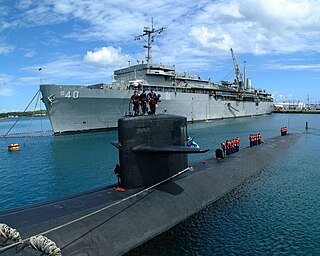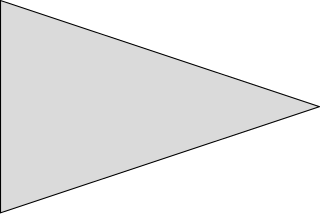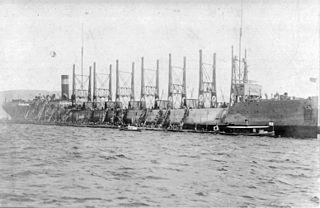
An aircraft carrier is a warship that serves as a seagoing airbase, equipped with a full-length flight deck and facilities for carrying, arming, deploying, and recovering aircraft. Typically, it is the capital ship of a fleet, as it allows a naval force to project air power worldwide without depending on local bases for staging aircraft operations. Carriers have evolved since their inception in the early twentieth century from wooden vessels used to deploy balloons to nuclear-powered warships that carry numerous fighters, strike aircraft, helicopters, and other types of aircraft. While heavier aircraft such as fixed-wing gunships and bombers have been launched from aircraft carriers, but these aircraft have not successfully landed on a carrier. By its diplomatic and tactical power, its mobility, its autonomy and the variety of its means, the aircraft carrier is often the centerpiece of modern combat fleets. Tactically or even strategically, it replaced the battleship in the role of flagship of a fleet. One of its great advantages is that, by sailing in international waters, it does not interfere with any territorial sovereignty and thus obviates the need for overflight authorizations from third-party countries, reduces the times and transit distances of aircraft and therefore significantly increase the time of availability on the combat zone.
USS New York may refer to:

A seaplane tender is a boat or ship that supports the operation of seaplanes. Some of these vessels, known as seaplane carriers, could not only carry seaplanes but also provided all the facilities needed for their operation; these ships are regarded by some as the first aircraft carriers and appeared just before the First World War.

A submarine tender is a type of depot ship that supplies and supports submarines.

USS Birmingham (CS-2/CL-2), named for the city of Birmingham, Alabama, was a Chester-class scout cruiser, reclassified a light cruiser in 1920. Entering service in 1908, the ship became known for the first airplane takeoff from a ship in history in 1910. During World War I, Birmingham escorted convoys across the Atlantic. The cruiser was decommissioned in 1923 and sold for scrap in 1930.

A pennon or pennant is a flag that is larger at the hoist than at the fly. It can have several shapes, such as triangular, tapering or triangular swallowtail.

HMSGannet is a Royal Navy Doterel-class screw sloop-of-war launched on 31 August 1878. She became a training ship in the Thames in 1903, and was then loaned as a training ship for boys in the Hamble from 1913. She was restored in 1987 and is now part of the UK's National Historic Fleet.

USS Nereus (AC-10) was one of four Proteus-class colliers built for the United States Navy before World War I. Named for Nereus, an aquatic deity from Greek mythology, she was the second U.S. Naval vessel to bear the name. Nereus was laid down on 4 December 1911, and launched on 26 April 1913 by the Newport News Shipbuilding and Dry Dock Company, Newport News, Virginia, and commissioned on 10 September 1913.
Her or His Majesty's Australian Ship (HMAS) is a ship prefix used for commissioned units of the Royal Australian Navy (RAN). This prefix is derived from HMS, the prefix used by the Royal Navy of the United Kingdom, and can be equally applied to warships and shore bases.

The Olympic-class ocean liners were a trio of British ocean liners built by the Harland & Wolff shipyard for the White Star Line during the early 20th century. They were Olympic (1911), Titanic (1912) and Britannic (1915). All three were designed to be the largest and most luxurious passenger ships at that time, designed to give White Star an advantage in the transatlantic passenger trade.

The C-class submarines were five United States Navy submarines built by the Fore River Shipbuilding Company in Quincy, Massachusetts, under a subcontract from the Electric Boat Company. Built between 1906 and 1909, and in commission from 1908 to 1919, all five were subsequently sold for scrap in 1920. They were considerably larger than the preceding B class at 275 tons submerged vs. 173 tons submerged, and were the first United States submarines with two-shaft propulsion, doubling the machinery of the B class.

The United States H-class submarines were Holland 602 type submarines used by the United States Navy.

HMS Ramillies was a Royal Sovereign-class pre-dreadnought battleship of the Royal Navy, named after the Battle of Ramillies. The ship was built by J. & G. Thompson at Clydebank, starting with her keel laying in August 1890. She was launched in March 1892 and commissioned into the Mediterranean Fleet as flagship the following October. She was armed with a main battery of four 13.5-inch guns and a secondary battery of ten 6-inch guns. The ship had a top speed of 16.5 knots.

USS McKeever Brothers (SP-683), sometimes written as USS McKeever Bros., was a United States Navy patrol vessel and minesweeper in commission from 1917 to 1919.

John Barry was an Irish-American officer in the Continental Navy during the American Revolutionary War and later in the United States Navy. He has been credited as "The Father of the American Navy" and was appointed a captain in the Continental Navy on December 7, 1775. He was the first captain placed in command of a U.S. warship commissioned for service under the Continental flag.

The French submarine Argonaute was an experimental attack submarine built for the French Navy between 1903 and 1911. Initially named Omega, Argonaute was laid down in January 1903, launched in November 1905 and commissioned in 1911. She was essentially an experimental submarine, and although in service during World War I, saw no action. Argonaute was decommissioned in 1919.













